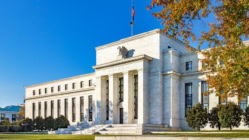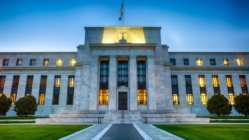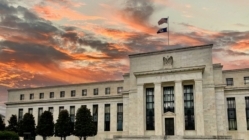The markets are going crazy, as everyone tries to anticipate the Fed’s next move. When deciding to raise or lower rates, the Fed watches (1) the labor markets; (2) inflation; and (3) consumer spending – and ALL THREE sent the markets and rates into a tizzy this week.
The Consumer Price Index (CPI) came in much cooler/lower than expected yesterday, and rates plummeted as a result. And today, the Producer Price Index also came in much cooler than expected (largely because of energy prices), but rates ROSE partially because retail sales fell less than expected.
Analysts are all over the place when it comes to these numbers. Jeff Snider though thinks this is proof that the recession is setting in; that labor markets will continue to soften; and that the Fed will have to cut rates sooner rather than later.
Numerous other analysts remain in the “rates will be higher for longer” camp. The following are some of the explanations I saw recently on social media: (1) labor markets remain strong; (2) stocks and economy will revive with even a slight lowering of rates; (3) inflation will remain strong because of strikes and higher wages; (4) energy prices will surge back up because of shortages; (5) the Fed can’t even think about lowering rates without stoking inflation again; (6) there is $2 trillion of unspent “Inflation Reduction Act” money waiting to be spent; and (7) consumers remain relatively strong with savings and higher wages.
CUMULATIVE INFLATION: Keep in mind that while the rate of inflation is dropping or slowing, prices themselves are not coming down. Cumulative inflation or price increases are still in excess of 25% or more for many goods and services and that is whacking consumers pretty hard. This is one of the reasons why analysts like Snider and Barry Habib think a recession is that much more likely.
UBS Sees Deep Fed Rate Cuts!
Habib and Snider are not alone: UBS Strategists See Far Deeper Fed Rate Cuts Than What Markets Are Pricing. This article was surfacing everywhere earlier in the week, and I am seeing many more similar predictions now from other analysts. So, the soft landing/hard landing and the higher-for-longer/rates falling debates continue to rage (and I mean RAGE), and it will be fascinating to see who ends up right. But, more and more analysts are now predicting steep rate cuts by the Fed in March.
14 Factors That Impact Your Interest Rate; Sharing My Rate Quotes
This blog goes out to thousands of real estate agents every day, and they often share it with their clients – which is something we love. I want to remind agents though that my rate quotes at the bottom of my blog have very specific assumptions. One quote is for an FHA loan, and FHA rates are always much lower than conforming rates. And the other quote is for a first-time homebuyer, and first-time buyer rates are now almost always much lower than the rates for non-first-time buyers.
A NON-first-time buyer could easily end up with an interest rate that is 1% higher than the rate I quote at the bottom of my blog. Hence, I encourage agents to share this blog with their clients as often as possible: 14 Factors That Impact Your Mortgage Rate.
Rate Roll-downs – Uh Oh…
If rates rise 1% after we lock a loan, do borrowers expect us to honor the interest rate we lock? Of course they do. And, we pay a very steep price to actually lock those interest rates by “hedging” those loans. I won’t go into the mechanics of hedging because it is too complicated for this blog (and I am oversimplifying below), but rest assured it can be costly.
One of the scariest things for every mortgage bank with a full pipeline is a steep drop in rates – and this is why: borrowers want it both ways. They want us to pay to protect their rate when rates are rising, but they also want us to lower their rate when rates are falling – via a “rate roll-down.”
Most lenders offer rate roll-downs, but what rate roll-downs really do is force most loan officers or lenders to do the loan for very little or no profit. This is because it often costs lenders a lot of money to pull a loan from their hedge. Among other things, the cost depends on how much rates have moved, the size of the loan, and how long the loan was in the hedge.
I am explaining all this so readers understand that rate roll-downs are not free and that we need to see a substantial reduction in rates before we can offer roll-downs. In addition, lenders still can’t roll down a borrower’s rate to the “rock-bottom-lowest rate” without losing money on the loan – because lenders still have to cover the costs associated with breaking the hedge. All lenders want to accommodate borrowers the best they can, but they still need to avoid losing money – and that ain’t easy when we are already locking loans with such thin margins.
























